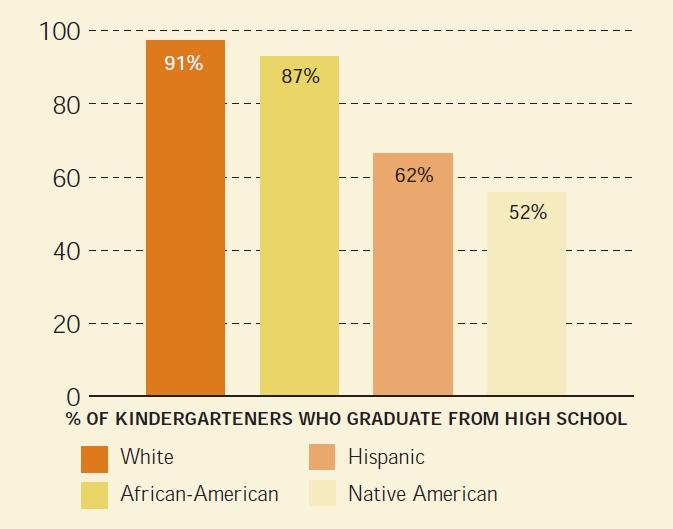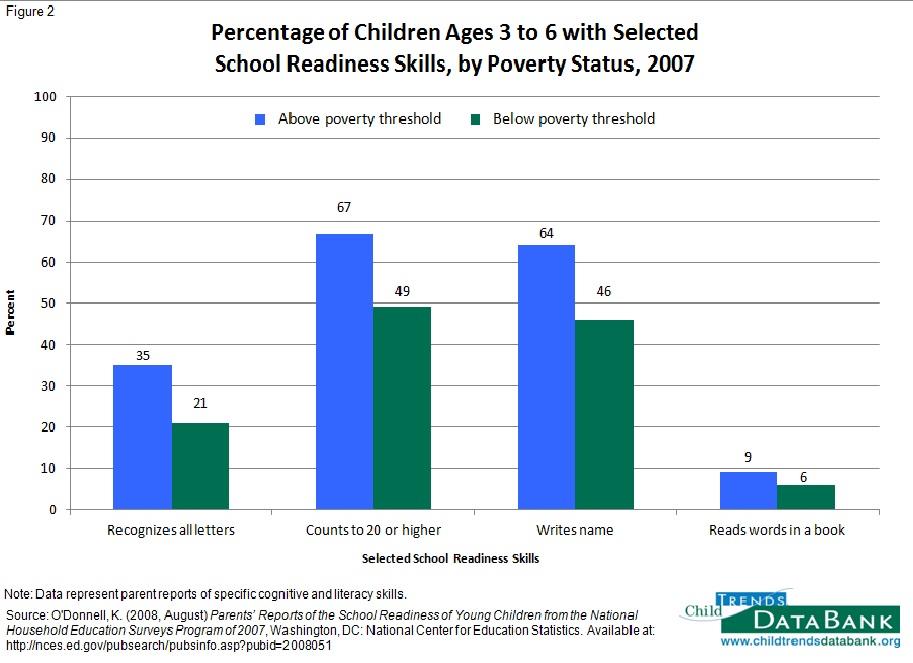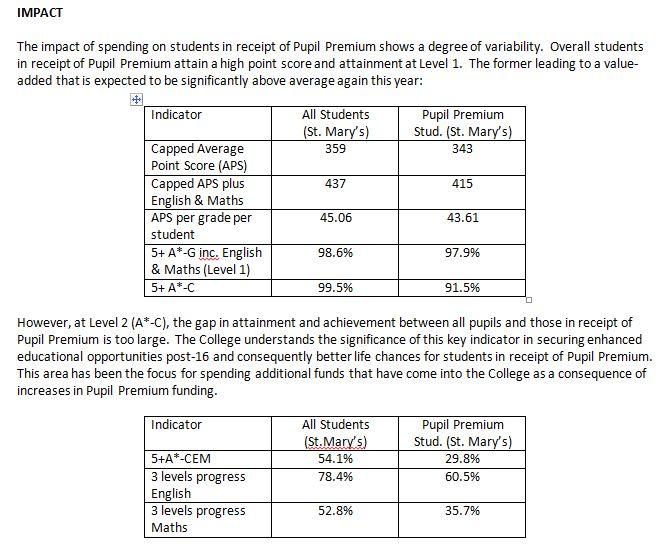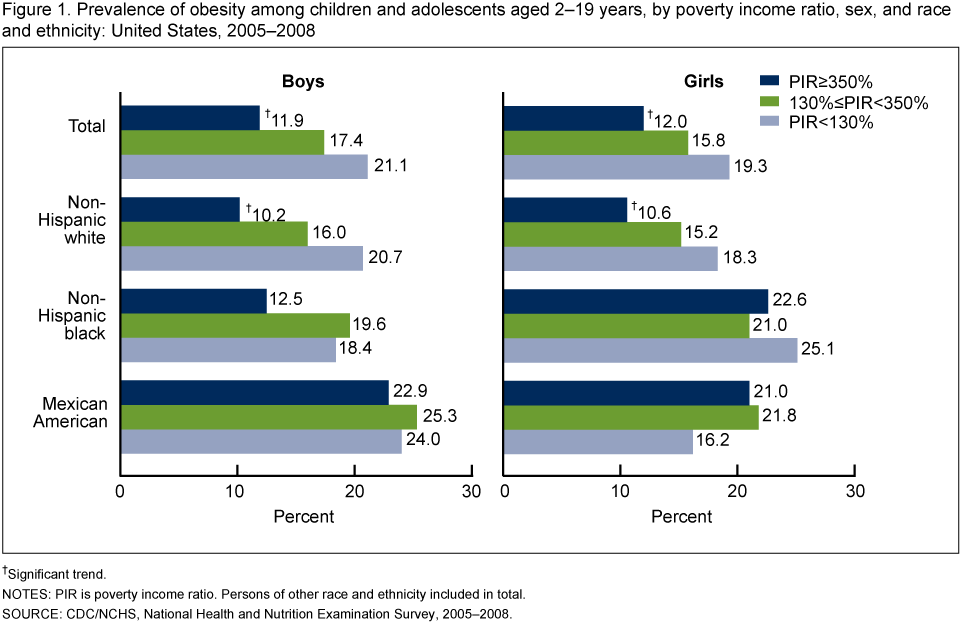Introduction
In 2012, it was noted that nearly 11.1 million children, aged between 5 to 17 years old, were noted to be from low income families which, as explained by George Stokes, & Wilkinson (2012), can result in a lack of access to a variety of opportunities for this segment of the population, the least of which is educational material which can have long term implications on academic achievement. The impact of poverty on children has been described by Murnane (2007) as having a “cascading effect” in that one factor leads to another resulting in a distinctly negative culmination.
Based on an analysis of current relevant literature, this paper will delve into the concepts of denial of opportunity and social structural inequality and how these manifest into adverse effects on a child’s physical health, cognitive abilities, self-perception, academic achievement and their capacity to be a well adjusted member of society. Going into this topic, this paper assumes that the different situations that a person encounters throughout their life can have a considerable impact on the way in which they develop.
This has been proven wherein children from low income families have been noted as having a 1.3 times greater propensity for learning disabilities or developmental delays as compared to those above the poverty line. Similar to the theoretical notion of nature versus nurture, this “spill over effect” ascribes to the notion that an individual’s environment will influence their developmental process through which other factors can be similarly affected. In fact, studies such as those by George, Stokes & Wilkinson (2012) show that introversion as a result of poverty can even affect a person’s academic capabilities due to their lack of confidence which would result in even more introversion due to their apparent lack of academic skills.
The end result is lower graduation rates wherein the U.S. Census bureau has shown that 16 to 24 year olds who come from low income families are 7 times more likely to dropout as compared to their counterparts from the upper and middle class (Murnane, 2007). The primary goal for this paper is to examine the impact that poverty would have on a child’s performance at school. Thus, the primary objectives would focus on social, economic and psychological issues and how they would affect a child’s development. As such, the paper will focus on issues related to structural inequality, societal adaptation as well as the connection between poverty and health. Directives for future research will focus on what can be done to address the gaps in the research.
Structural Inequality and its Effect on Children
Structural inequality, in essence, is an inherent bias within social structures which can provide some advantages to a select group of people within society while at the same time marginalizing others (Murnane, 2007). One clear example where structural inequality impacts children can be seen in the current U.S. school system and their use of tracking in order to segregate performers from non-performers.
While on paper it can be seen as a viable way of providing the proper type of education where it is needed the most, the fact remains that the tracking system has actually resulted in lines being drawn between children from low income households and those from mid to upper tier level families with higher income levels (Murnane, 2007). It can be seen that children from middle class or upper class families are usually placed in the upper tier of the tracking system while children from poor families are usually set in the lower tier system.
Nearly 40 percent of children from low income households in the U.S. are not ready for primary schooling due to a lack of access to educational material and, as such, it cannot be expected that they can immediately catch up with their middle to higher income counterparts that have had access to proper educational material (Murnane, 2007). What must be understood is that the segregation is not wholly based on the economic class of the students; rather, it is based on their inherent performance in school.
Unfortunately, the study of Baggerly (2006) showed that there is a considerable difference in the performance levels of students from different economic classes brought about through their access to different methods of education resulting in their classification under the tier system being somewhat biased towards individuals with greater access as compared to those who do not. From the standpoint of Baggerly (2006), tier based segregation can have a negative impact on children since it relegates to the category of “a poor performer”. Given the negative connotations this comes with, this can impact a child’s mental health since it lowers their confidence and even makes them believe that they deserve to be in that class since they are not smart enough (Baggerly, 2006).

As it can be seen from the following graph, minority populations impacted by poverty have a lower probability of graduating as compared to their more affluent counterparts. This type of behavior is further worsened by the social stigma they receive when they are classified as being poor resulting in a distinct lack of motivation to learn and a lack of enjoyment when it comes to their lessons in school which results in lower graduation rates.
Gándara (2010) goes into further detail regarding this self-depreciating behavior by explaining that positive reinforcement helps to instill a child with greater confidence resulting in better overall academic performance. However, in cases where they are categorized as being in “the dumb class” so to speak, this can severely impact their mental health to the extent that it makes them more prone to depression, social isolation and introversion.
Gándara (2010) also presents the notion that class diversity (i.e. different ethnicities and social classes in a classroom) plays a crucial role in enabling students to be more well adjusted when it comes to encountering people from different races and economic classes. One fact that should be taken into consideration is that the lowest performing high schools in the U.S. that utilized the tier system actually produced 50% of all Hispanic dropouts and 58 percent of all African American school dropouts (Gándara, 2010).
In the case of the tier system, since minorities are at times from low income families, this creates a situation where most of the children in the lower level of the tier system are minorities. This lack of diversity supposedly impacts a child’s ability towards proper social adjustment since they are isolated towards either people from their same ethnicity or their same social class (Gándara, 2010).
Critique of the Above Research
The main shortcoming of this particular research is the fact that it neglects to take into consideration the fact that social development is not primarily isolated to children being in school. For instance, there are cases where children have been home schooled and have developed into socially well adjusted individuals. Social adjustment, from the perspective of Pare (2004), is based more on the manner in which parents teach their children and how this impacts their capacity to interact with other people.
Pare (2004) explains that social lessons learned at home are more likely to influence a child’s capacity to interact with people as compared to the type of people they encounter at school. Not only that, Pare goes into further detail by explaining that the process of social adjustment is actually continuous and is not primarily isolated to a particular age. Pare points out that there are literally thousands of examples where a child was initially introverted yet gradually developed into a more sociable and extroverted individual.
Social adjustment from the perspective of White, Leavy & Masters (2003) is accomplished through continuous exposure to social events and in the case of children this can manifest in a wide assortment of possible things ranging from family gatherings to playing with other children from the same neighborhood. While it can be argued that the range of social adjustment is curtailed in the case of children from low income families given the lack of interaction with individuals from higher economic classes both within their own neighborhood and within the school due to the tier system being put in place, this does not necessarily mean that no social development on the part of the child is taking place (White, Leavy & Masters, 2003).
Impact of Advantages
Wolf, Gennetian, Morris & Hill (2014) go into greater depth regarding this topic by explaining that there are three distinct advantages for children from higher income families, these are: parental involvement in their education, access to different types of educational materials and money to spend on tutors.

These advantages can have a discernable impact on a child’s educational performance as seen in the graph above. Wolf et al. (2014) stated that parental involvement in a child’s education is absolutely essential since classes can only do so much when it comes to teaching children. Having a nurturing environment at home that supports their academic achievement can help immensely in enabling children to gain the necessary confidence and knowledge to succeed academically. In the case of children from low income households, parental involvement in education often does not occur (Fiscella & Kitzman, 2009). This is either because the parents in question are usually working several jobs to support their families or they lack the educational capacity to actually assist their children. (Fiscella & Kitzman, 2009).
The Main Issue with Such a Perspective
The main problem with the perspectives that have been shown so far regarding the advantages of children from mid to high income families and the disadvantages experienced by children from low income families is the fact that it fails to take into consideration factors related to motivation and the actual desire to learn. If the data presented by the various researchers that have been mentioned were absolute (i.e. completely infallible), then it would likely be the case that all children from poor families would grow up with low self confidence, a distinct lack of cognitive ability and would be unable to adjust properly in society, however, this is not the case. In most instances, people from poor families tend to develop normally, albeit they have fewer opportunities available to them as compared to their counterparts from higher income families. In fact, there are instances where children from poor families outperform individuals from higher income families.

(Baggerly, 2006)
For instance, under the “Pupil Premium” campaign in the UK, financial assistance to economically disadvantaged children resulted in considerable levels of academic achievement. Hill (1998) explains that instances such as these are due to greater levels of motivation and the desire to learn so that they can get out of their current situation. Such an attitude is often instilled by their parents resulting in the desire to prove themselves and get better academically (Hill, 1998).
However, there has yet to be studies determining how such a behavior can be manifested in all poor students since only a small percentage of them develop such an attitude. One possible explanation would be greater parental involvement in a child’s academic achievement which, when combined with positive reinforcement at home, results in greater levels of academic achievement for that child in the long term regardless of their current economic class. While such an assumption does have merit, there has yet to be sufficient research on the topic to merit it as absolute fact instead of a mere assumption.
Poverty and Health
From a physical development and health standpoint, one of the negative impacts of poverty on children is the fact that it limits their access to healthy food which, as a result, creates the potential for the development of health related issues. Problems related to childhood obesity, diabetes and heart problems are among the few problems currently plaguing children from low income families as a result of unhealthy eating habits (Wood, 2003).

As it can be seen, children who come from low income households and are part of minority populations are more likely to be obese as compared to their more affluent counterparts. Insights into the degree of the problem reveal that on average only 42% of low income children who come to school actually opt to eat at the school’s cafeteria (Wood, 2003). The problem is connected to the fact that some parents simply cannot afford the monthly bill for the school lunches and, as a result, have to resort to giving their children fast food.
Theoretical Framework Utilized for Analysis
While this paper has not utilized a theoretical framework to examine the issue, one of the major frameworks utilized in such an examination comes in the form of the socio-psychological approach. This type of approach utilizes the current education system as a macro factor (i.e. the current tracking system utilized in schools) with the micro factors of a child’s socioeconomic status in order to examine their rate of academic achievement. However, the inherent problem with this theoretical approach is that while it helps to connect economic advantages with academic achievement, it fails to take into account how some students, regardless of economic status, are able to perform at a higher level. Further analysis is needed regarding the factors that influence academic achievement outside of a socio-economic focus.
What Researchers Can Do to Address the Gaps in the Research
Addressing gaps in the research would take the form of investigating what factors would influence a poor child’s performance at school to reach the same level as those of their peers from more affluent backgrounds. One possible way of doing so is to utilize a survey based approach that implements the work of Epstein and Salinas in their 1993 study involving parental involvement and academic performance. Utilizing their work as a basis, this would lead researchers towards developing an adequate survey that would help to measure the factors that would influence a child to perform at a high level regardless of economic class.
Solving the Issues
When looking at the research conducted so far, there are two possible solutions to address the issue of cognitive development and social adjustment. The first is to remove the current tracking system in schools that is used to segregate students. By doing so, this encourages social interaction across different ethnic and economic classes resulting in better practices in relation to social adjustment. The second solution is to encourage parental involvement in a child’s academic pursuits. This would help considerably in increasing that child’s motivation towards learning. Lastly, when it comes to the topic of health, it is advised that some sort of government subsidy be put into effect for children from families from low income families to have a healthy school lunch.
Conclusion
It is through the examples that have been given thus far that this paper succinctly shows the various negative impacts that poverty has on children and gives recommendations on what possible methods can be implemented by the government in order to address the aforementioned issues. Should the recommendations be followed, it can be expected that some of the systematic issues surrounding the negative impact of poverty on children in the U.S. can be addressed resulting in the creation of better opportunities for children in the country.
Summary
The articles delve into the concept that there is a considerable level of difference between the academic performance of children from rich or poor backgrounds. This is due to differing levels of access to educational material and other such advantages which gives the economically well off a considerable advantage when it comes to their school work. However, this aspect is not a constant in all cases involving academic performance wherein there are numerous cases which show students from low income households equaling or even exceeding the capabilities of their well off counterparts.
Trends
The primary trend in the research articles focuses on the perspective that children from low income households have a considerable disadvantage from an educational, social development and health perspective. Simply put, by virtue of what social class they were born to, they have a greater likelihood of developing health issues, have lower levels of academic performance and are less likely to be as socially developed as their counterparts from middle to upper income households. This is a perspective that is evident across all the different articles that were read and shows how it is essential that some form of support program be implemented in order to “level the playing field” so to speak when it comes to academic performance.
Themes
While there are numerous examples that were recommended from the various articles, the one main idea that continues to be prevalent comes in the form removing the current barriers that have been placed in the school system that perpetuate the “stigma” of being poor. This comes in the form of removing the tier system that schools have developed in order to separate the performers from the non-performers. It is explained by the articles that while the implementation of such a system is logically sound, it is ethically disastrous since it creates a detrimental effect on a child’s self-confidence which contributes to issues regarding their self esteem and academic performance.
Theory
After going over the various studies regarding this topic, no specific theories were found and, as such, can be considered as a defect in the various research studies that investigated this topic.
Strengths
The primary strength of the research articles chosen for this report comes from their diverse points of view when it comes to the issue of child poverty and the multiple avenues in which it can adversely impact a child. This helps tremendously in understanding the different points of view on the topic and what potential solutions could be developed by other researchers in order to address the problem.
Shortcomings
One of the inherent shortcomings when going over the various academic articles is that while issues are clearly outlined and explained, the potential methods to solving them are severely lacking in detail. The authors should have been more explicit when it comes to showcasing what strategies would be effective in addressing the issue of child poverty and how such methods could be implemented within the context of what they had written.
Implications
The primary implication that can be garnered from this report is that there is still a lot that can be done in order to address the issue of child poverty within the U.S. One place in which the government can start is through the development of better policies that specifically address the factors that were brought up in this report.
Reference List
Baggerly, J. (2006). Service Learning With Children Affected by Poverty: Facilitating Multicultural Competence in Counseling Education Students. Journal Of Multicultural Counseling & Development, 34(4), 244-255.
Fiscella, K., & Kitzman, H. (2009). Disparities in Academic Achievement and Health: The Intersection of Child Education and Health Policy. Pediatrics, 123(3), 1073.
Gándara, P. (2010). The Latino Education Crisis. Educational Leadership, 67(5), 24.
George, A., Stokes, L., & Wilkinson, D. (2012). Does Early Education Influence Key Stage 1 Attainment? Evidence for England from the Millennium Cohort Study. National Institute Economic Review, 222(1), R67-R80.
Hill, L. E. (1998). The Institutional Economics of Poverty: An Inquiry into the Causes and Effects of Poverty. Journal Of Economic Issues, 32(2), 279-285.
Murnane, R. J. (2007). Improving the Education of Children Living in Poverty. Future Of Children, 17(2), 161-182.
Pare, M. (2004). Educating Marginalized Children: The Challenge of the Right to Education in Brazil. International Journal Of Children’s Rights, 12(3), 217-257
White, H., Leavy, J., & Masters, A. (2003). Comparative Perspectives on Child Poverty: a review of poverty measures. Journal Of Human Development, 4(3), 379.
Wolf, S., Gennetian, L. A., Morris, P. A., & Hill, H. D. (2014). Patterns of Income Instability Among Low- and Middle-Income Households with Children. Family Relations, 63(3), 397-410.
Wood, D. (2003). Effect of Child and Family Poverty on Child Health in the United States. Pediatrics, 112(3), 707-711.